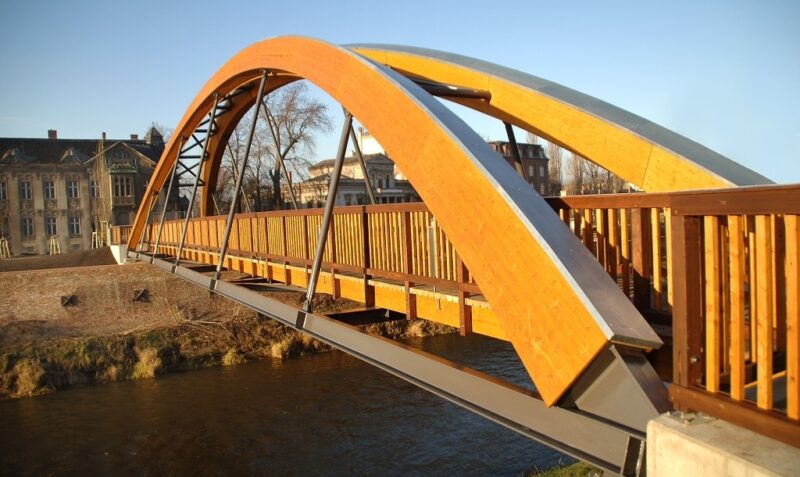How footbridges can improve accessibility and encourage car-free travel
Published: 01/07/20 By: Mike Bekin
Footbridges are a fantastic way to make a town, village or development more accessible. Helping people to navigate busy roads, streams, railway lines and other potential obstructions, well-placed and well-built footbridges can make an area safer, more attractive and more practical. What’s more, building footbridges to improve access can also encourage people to walk or bike instead of drive to their destination. This in turn can help to reduce pollution and get local people active.
Improved accessibility
All too often, walking and cycling routes are made impractical or dangerous by busy roads and other hazards. This can put people off of travelling under their own steam and make it more likely they’ll have an accident when they do. Footbridges allow councils and developers to provide safe passage to people using an area, making shops, schools, houses, and parks more accessible in the process.
Just one footbridge can make a dramatic difference to the accessibility and safety of an area. This is especially true when communities and businesses are consulted about the project. Getting local input can help councils and developers to properly site their new footbridges, ensuring they give maximum benefit to people who live and work nearby.
A good example of this was the footbridge we worked on for the London Olympic Mountain Bike Park. Built to a cutting edge design using one of the oldest materials in the world, this timber footbridge uses innovative techniques to create a structure that’s durable as well as beautiful.
The River Clyst Boardwalk in Topsham, Exeter is another good example of how footbridges can aid accessibility. As the bridge crossed a protected RSPB site, it needed to be designed sensitively and have minimal impact on the surrounding environment. To create a bridge that was attractive, practical and in keeping with its surroundings, we used durable decking planks with an extra layer of anti-slip strips. Ekki joists were used to ensure the construction of the bridge was as long lasting as possible.
Getting people active
According to a recent study by the World Health Organisation, one in three British adults is not getting enough exercise. For children, the number is even higher. As @sciencefocus says, “Four out of five adolescents in the UK are not doing enough exercise with girls lagging behind boys in staying active.” This inactivity has lead to a significant increase in obesity and other lifestyle-related conditions among Brits of all ages.
One of the best ways to encourage people to get more exercise is to make towns, cities, housing developments and recreational spaces more accessible. Using footbridges to help pedestrians navigate their way safely around the area is a great way to improve accessibility and get people active.
The importance of encouraging car-free travel
Air pollution is a real problem in towns and cities across the UK. Research has shown that breathing in particulate pollution on a regular basis can seriously damage your health. In fact, the World Health Organisation estimates that up to seven million people die every year because of poor quality air.
Making towns, cities and developments more accessible should encourage people to make fewer journeys by car. This in turn should help to reduce air pollution in the local area, boosting air quality in the process. Making an area more accessible also helps to change the habits of those who live there. Once people are used to walking or cycling instead of driving, they’ll be a lot more likely to leave the car at home and live a more active, healthier lifestyle.
If you’d like to learn more about the benefits of footbridges, and how you can incorporate a timber footbridge on your next project, we can help. Explore our site today to find out more.
Tags: Components, Footbridges
Categories: Insights
